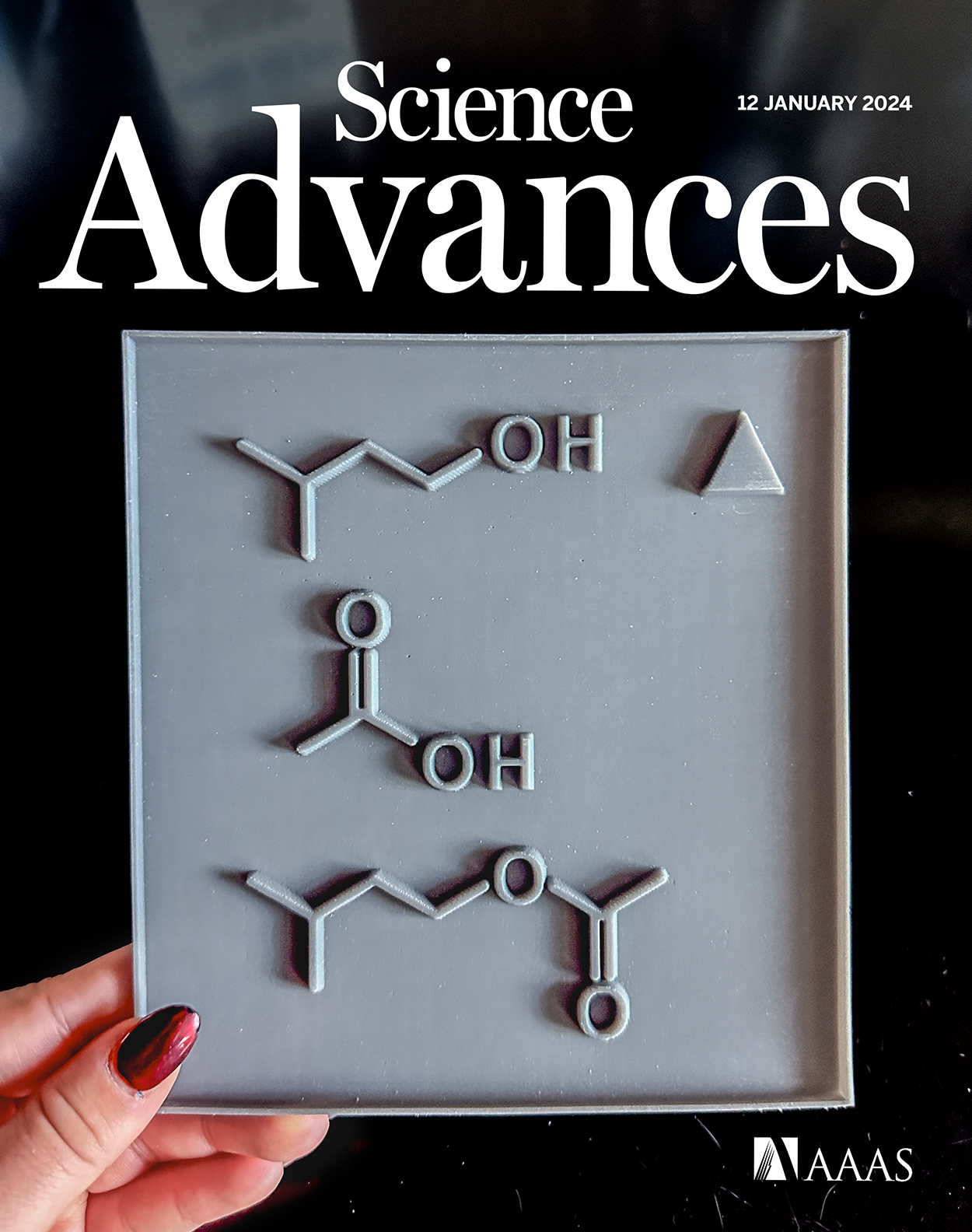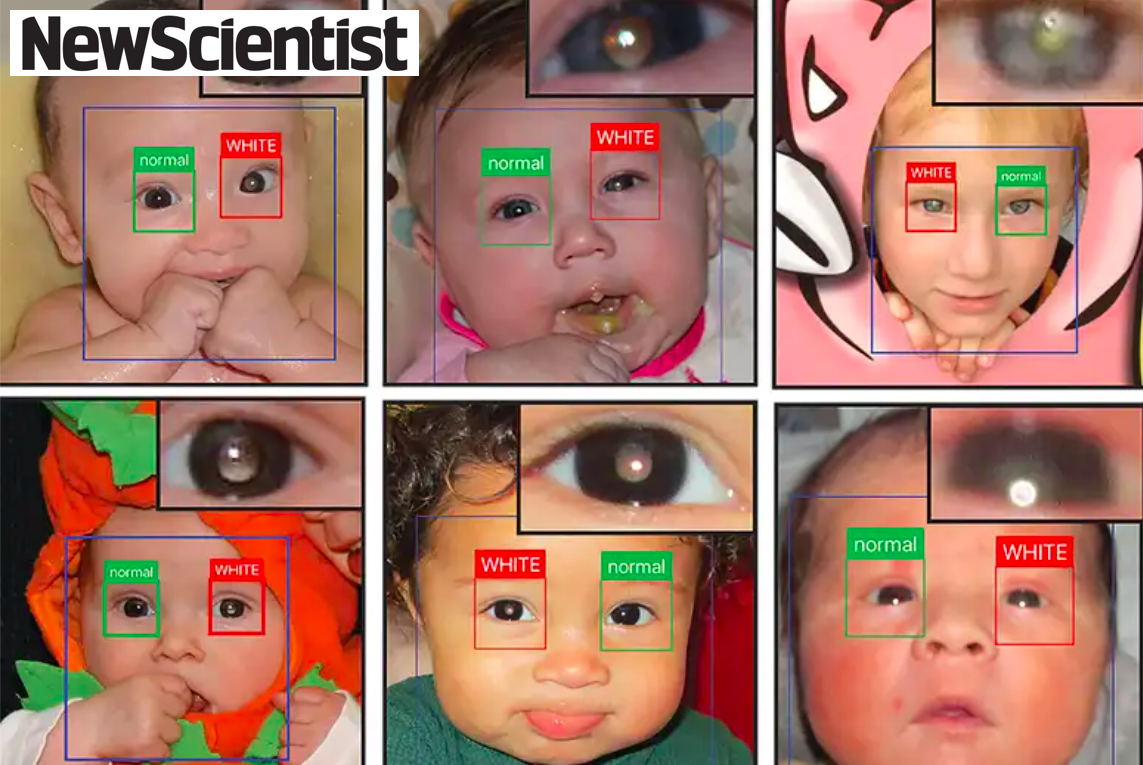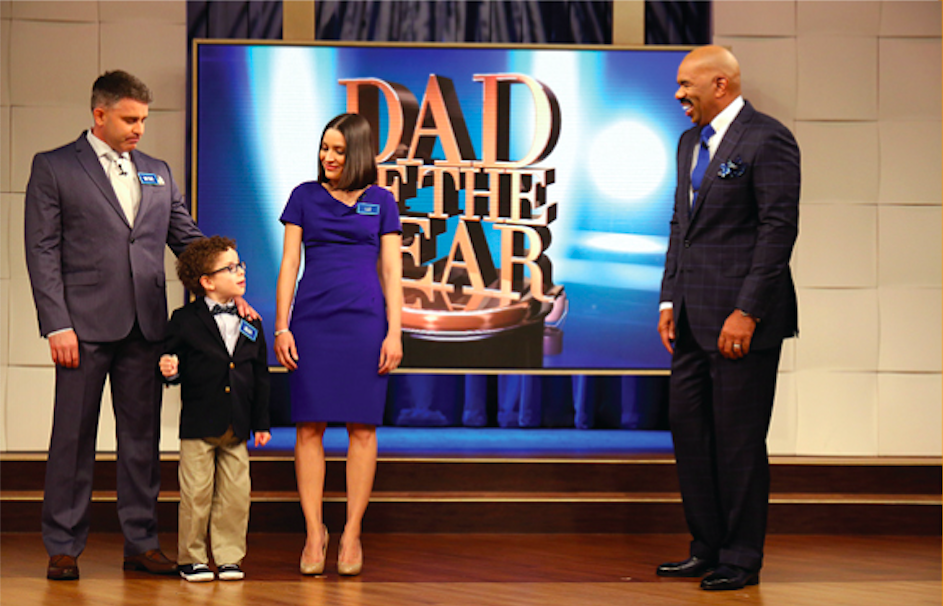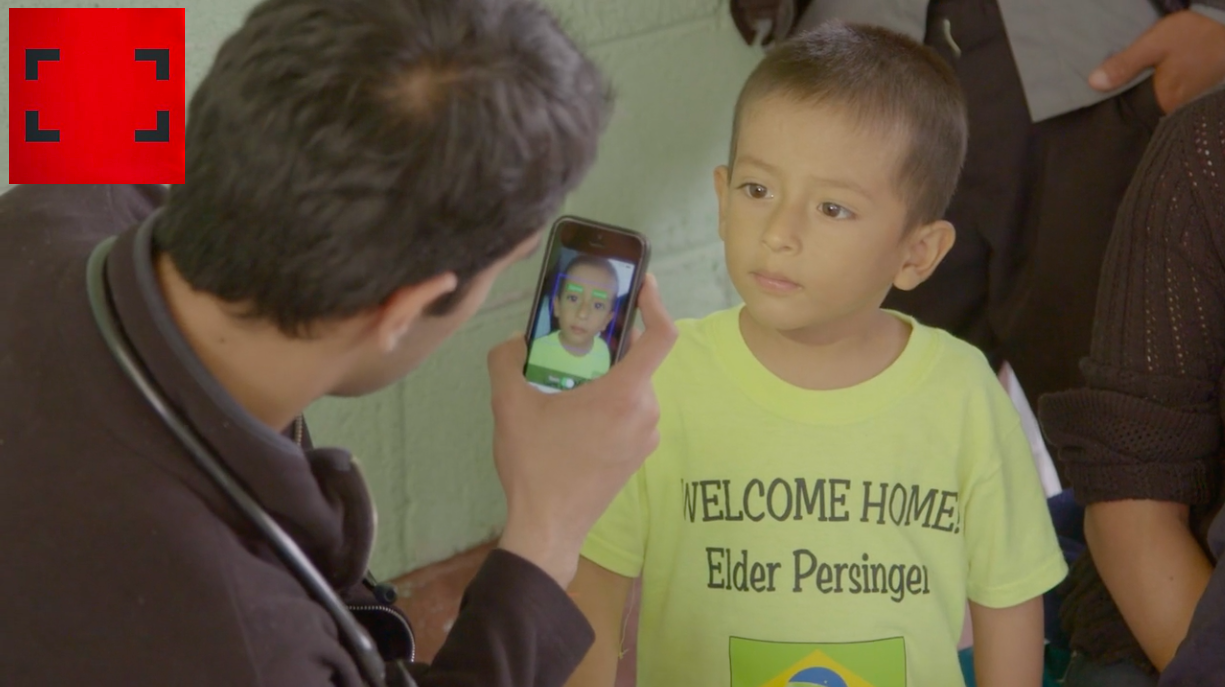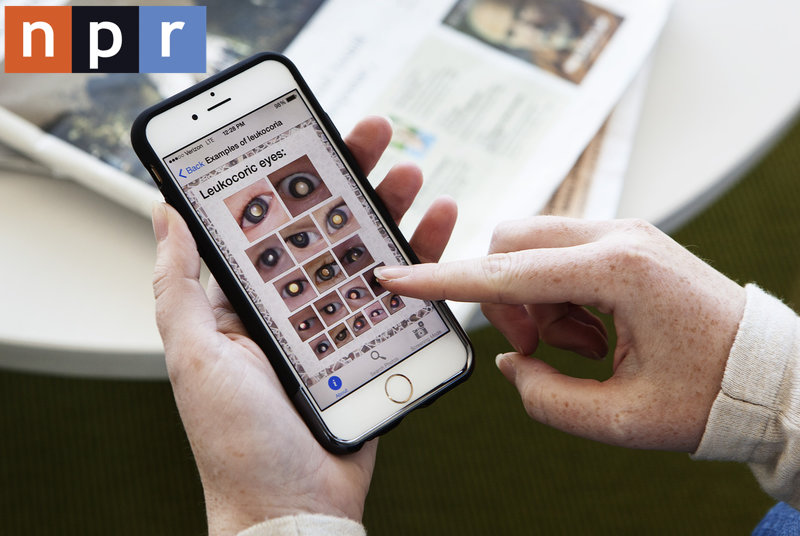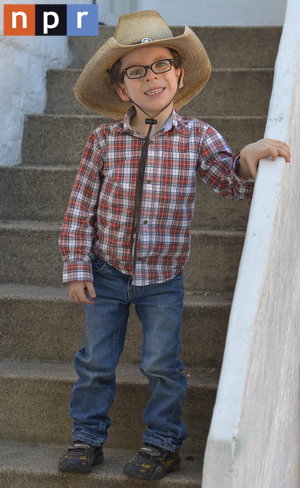SCIENCE ADVANCES VOLUME 10ISSUE 212 JAN 2024 ONLINE COVER A frontlit lithophane graphic of the reaction for isoamyl acetate. To increase the access to high-resolution data for people with blindness, lithophane graphics were developed using 3D-printing. Alonzo et al. report the creation of lithophane codices with greater resolution and an unlimited range of protuberance compared to existing swell form graphics. High school students with blindness were able to accurately interpret lithophanes of esterification reactions, despite little or no
Author: admin
A new grant funded by the NIH (SEPA) has been awarded to the Shaw lab to promote inclusion of students with blindness or low vision (BLV) in STEM! Students with blindness or low vision (BLV) continue to be systemically excluded from chemistry, especially experimental chemistry. While other underrepresented groups face implicit bias across STEM, students with BLV still face explicit bias in chemistry. There are only ~ 10 PhD-levelchemists in the U.S. with early blindness.
https://www.inverse.com/science/learning-is-sweet/amp https://www.smithsonianmag.com/science-nature/gummy-candies-help-students-blindness-study-chemistry-180977853/ https://www.insidescience.org/news/candies-could-help-students-learn-chemistry-sensing-shape-molecules-their-mouth
https://www.sciencemag.org/podcast/scientists-role-opioid-crisis-3d-printed-candy-proteins-and-summer-books
https://onlinelibrary.wiley.com/doi/full/10.1002/anie.202001452 The degree by which metalloproteins partially regulate net charge (Z ) upon electron transfer (ET) was recently measured for the first time using “protein charge ladders” of azurin, cytochrome c, and myoglobin [Angew. Chem. Int. Ed . 2018 , 57 (19), 5364–5368; Angew. Chem . 2018 , 130 , 5462–5466]. Here, we show that Cu, Zn superoxide dismutase (SOD1) is unique among proteins in its ability to resist changes in net charge upon single ET (e.g., ΔZ ET(SOD1)=0.05±0.08 per electron, compared to ΔZ ET(Cyt‐c)=1.19±0.02). This total regulation of net
https://www.cbsnews.com/video/cradle-app-detects-eye-disease-by-scanning-your-photos/ An app used to detect several different eye conditions is especially helpful in spotting diseases in young children who usually don’t know what normal vision looks like. The app scans photos on your smart phone to identify unusual glares that could be signs of 27 different eye conditions. Omar Villafranca speaks to one set of parents who used the app, Cradle, to catch an early warning sign about their young son’s health.
https://www.npr.org/sections/health-shots/2019/10/07/766749474/an-app-that-can-catch-early-signs-of-eye-disease-in-a-flash It’s hard for doctors to do a thorough eye exam on infants. They tend to wiggle around — the babies, that is, not the doctors. But a new smartphone app takes advantage of parents’ fondness for snapping pictures of their children to look for signs that a child might be developing a serious eye disease.
https://www.sciencemag.org/podcast/app-eye-disease-and-planting-memories-songbirds Host Sarah Crespi talks with undergraduate student Micheal Munson from Baylor University in Waco, Texas, about a smartphone app that scans photos in the phone’s library for eye disease in kids.
https://www.newscientist.com/article/2218476-app-can-detect-signs-of-eye-diseases-in-kids-by-scanning-your-photos/#ixzz63s2EaCuR Camera flashes often can make people’s pupils look red in photos. More rarely, flashes can make them appear white – which is usually just a trick of the light but can be a sign of disease, including an eye cancer most common in young children.
https://www.newsweek.com/scientists-app-see-cancer-eyes-kids-1462616 A scientist whose son lost an eye to cancer has helped develop an app that can detect diseases by looking at photos of children. Bryan F. Shaw, associate professor in the Department of Chemistry and Biochemistry at Baylor University, and colleagues hope the app will save children from going blind. The makers dedicated the study to a child who died during research.
https://advances.sciencemag.org/content/5/10/eaax6363 The “red reflex test” is used to screen children for leukocoria (“white eye”) in a standard pediatric examination, but is ineffective at detecting many eye disorders. Leukocoria also presents in casual photographs. The clinical utility of screening photographs for leukocoria is unreported. Here, a free smartphone application (CRADLE: ComputeR-Assisted Detector of LEukocoria) was engineered to detect photographic leukocoria and is available for download under the name “White Eye Detector.” This study determined the sensitivity,
https://app.criticalmention.com/app/#clip/view/23138402?token=0cc2a6b8-ca43-4ece-a9e4-9d29ea1eda2e This event was staged by the producers of TSHS as a “Dad of Year” competition.
This independent documentary (by Persistent Publications) describes how doctors are using our free technology. It won honorable mention at the 2016 Pulitzer-CUGH competition
See testimony and demonstration of our free technology at minutes: 27:39, 52:00 and 121:00
https://people.com/human-interest/father-creats-smartphone-app-to-detect-eye-cancer-after-his-son-was-diagnosed/ Bryan Shaw’s app has successfully led to the diagnosis of several different eye conditions in children.
This talk was given at a local TEDx event, produced independently of the TED Conferences. Bryan Shaw shares the story of his son Noah, who developed retinoblastoma- a form of cancer that affects children. After several procedures, Shaw noticed that early photos of Noah had visual cues that could have helped detect his cancer earlier. And so he set out to develop a free app that parents can use to greatly increase the rate at
https://www.npr.org/sections/health-shots/2014/10/31/359568507/look-here-phone-app-checks-photos-for-eye-disease/ There’s now free software for your iPhone that lets you check for early signs of certain eye diseases. The idea for the app comes from a Baylor University chemist named Bryan Shaw. We introduced you to Shaw late last year.
https://www.npr.org/sections/health-shots/2014/08/11/338329842/where-we-learn-that-artificial-eyes-really-arent-round-at-all Almost every time reporters go out on assignment, they run across something unexpected that they just can’t fit into the story they’re working on. When science correspondent Joe Palca and producer Rebecca Davis were in Boston reporting on a boy with a rare form of cancer, they found themselves in the office of Jahrling Ocular Prosthetics, a business dedicated to making artificial eyes.
https://www.npr.org/sections/health-shots/2014/05/07/310104315/faith-drives-a-father-to-create-a-test-for-childhood-cancer/ When Bryan and Elizabeth Shaw learned that their son Noah had a potentially deadly eye cancer, like a lot of people, they turned to their religious faith to help sustain them. But faith is also impelling Bryan Shaw to create software to detect eye cancer in children as soon after birth as possible.
https://www.npr.org/sections/health-shots/2014/05/06/309003098/chemist-turns-software-developer-after-sons-cancer-diagnosis/ A scientist’s ambitious plan to create an early detection system for eye cancer using people’s home cameras is coming along. Last fall, we told you about Bryan Shaw’s scheme. He believes parents’ cameras can reveal whether their baby has leukocoria, a white glow coming from the pupil when you shine a light in their eyes. This so-called white eye can be an early sign of retinoblastoma, a rare form of eye cancer. Children with the
https://www.npr.org/sections/health-shots/2013/11/05/243189819/how-pictures-of-infant-boys-eyes-helped-diagnose-cancer Bryan Shaw never expected to write a research paper about a rare eye cancer. He’s a chemist who works on how metals and proteins interact. But life has a funny way of interrupting the best-laid plans, and now Shaw may be on to a powerful new way to detect retinoblastoma in newborns. Such early detection could mean children with the disease would have a better chance of keeping their eyes and staying alive.
